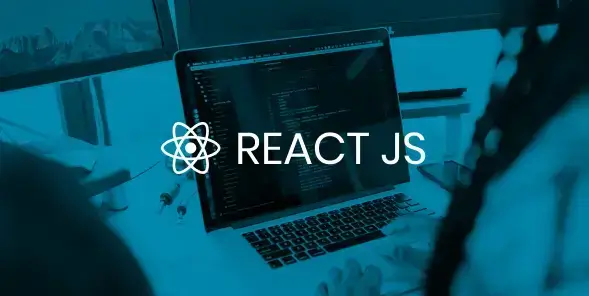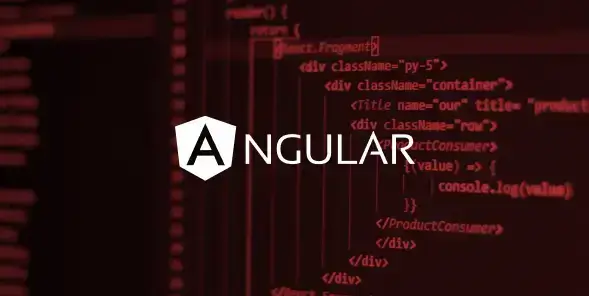The information technology sector sets an incredible example of how technologies are transforming. Over the years, the demand for web application development is growling in the market. Hence, JavaScript technology is overgrowing.
However, NodeJS ranks at the top in the backend JavaScript technology race. Thus, the crowd of talent is upscaling the frameworks for their benefit. In this article, we’ll discuss NodeJS frameworks for web application development.
What is NodeJS?
The backend JavaScript technologies are booming, and NodeJS is stepping up in the market. NodeJS is a server-side leading open-source JavaScript run-time, and the backend software engineers are developing fantastic frameworks to support it. Thus, resulting in high demand for backend developers in the market.
Therefore, the web application development company is looking to hire backend developers.

The company providing NodeJS development delivers basic single programming language web applications. As NodeJs is an open-source and cross-platform JavaScript runtime, it permits the developer to compose code that goes past the limits of the browser by using virtual assistants. Here, NodeJS goes about as a covering for these virtual machines, giving profound usefulness through natural eccentric APIs.
Well, each technology serving web application development has its frameworks that they use specifically throughout the development cycle. Now let's learn about the NodeJS frameworks.
What are the types of NodeJS Frameworks?
NodeJS has three frameworks:
- MVC framework
- FullStack MVC framework
- Rest API framework
A list of NodeJS frameworks for Web Application Development

As per the data, NodeJS frameworks have resulted in the highest productivity of the developers and enhanced the quality of web application development. And so, NodeJS frameworks have taken the spotlight in the industry. Here is a list of some of the famous NodeJS frameworks.
- ExpressJS:
The most reliable development tool for NodeJS backend development is ExpressJS, aka Express.
Express JS is the fast, progressive, and essential web framework for NodeJS. ExpressJS brings a set of features for web and mobile applications with the alignment of high-speed operations and single-threaded behavior for NodeJs. It is becoming the default framework of NodeJS.
Features of ExpressJS
- Swift server-side or backend development web framework
- Middleware handles the systematic organization of various functions of ExpressJs.
- Templating provides web content pages by developing HTML templates on the server side.
- MVC architectural arrangement
- Efficient routing & Content negotiation to commute via HTTP from client-side to server-side.
- Koa JS:
Koa JS is often considered a Next-gen framework of NodeJS. Because of its dominant nature, Koa JS builds extraordinary APIs for web services rapidly and efficiently. It is another open-source NodeJS framework that flawlessly helps to develop web and mobile applications.
As the creator of Koa & Express is the same, we can catch the similarity while composing codes on the stacks. We can work flexibly with Koa, also like express. Though the creator is the same, they have distinct natures. ExpressJS presents an “enhanced Node,” while KoaJS presents a “restore and replace Node.”
Feature of Koa JS:
- It is a flexible and lightweight version of ExpressJS
- It has exceptional error-handling features that ease the developer’s tasks.
- It has a wide range of customizable options for development.
- Clean caches, support content, and proxy negotiation
- Cascading middle with personalization user experience
- Meteor JS:
Meteor JS is a software startup launched in 2012 and is an open-source & free isomorphic JavaScript framework using NodeJS. It is a top pick for development, looking specifically for a JavaScript framework using one language. Meteor JS is feasible with cross-platforms and allows swift prototyping.
Meteor promotes prompt data transfers between server and client because of its comprehensive libraries and testing features
Feature of Meteor JS:
- Swift Prototyping and cross-platform JavaScript framework
- Providing Full Stack solutions
- Composing code in Isomorphic and modern JavaScript framework
- Simple integrations with various frameworks
- Rapid interactions with effortless results
- Next JS:
Next JS is an open-source web development framework enabling React web applications server-side rendering and creating static websites. The primary use of NextJS is server rendering, which summarizes the difficulty of web browsers and boosts security.
When it comes to building an interactive application along with SEO-friendly features, developers choose the NextJS framework.
Feature of Next JS:
- Extendable and picture optimization
- Automatic compilation and bundling
- Static middleware
- Built-in CSS
- To craft React design in the backend with the NextJS framework
- Socket.io:
Socket.io is a library JavaScript framework used to biface communication between the server and client while building real-time applications. The real-time applications are connected and have imperative features of real-time updates and responses configured by Socket.io functionalities.
Features of Socketio:
- Reliable framework
- Auto reconnecting
- Packet buffering
- Same APIs for client and server-side
- Bidirectional and low-latency communication
- Nest JS:
This is an ever-evolving Node.js system building dynamic and versatile enterprise-grade applications and offering total adaptability with its comprehensive libraries. Thus, this framework is used to build multilayered enterprise applications.
Nest JS is also called a productivity booster for the backend. As this framework has similarity with a subset of Javascript (i.e., worked with Typescript), it adheres to the clean code design while keeping up with the code intricacy of enormous scope applications. In addition, the Nest JS offers a brilliant combination with sister systems like Fastify and Express.
Features of Nest JS:
- Open Source Framework
- Strong CLI to boost productivity and ease development
- Robust modular structure and features
- Combination of object-oriented and functional reactive programming
- Detailed documentation
- Hapi JS:
Hapi is an open-source NodeJS framework, an economically available server for web application development. Hapi offers advantages to building APIs for websites, servers, and HTTP- proxy applications. It does not need unofficial middleware as it has a rich set of built-in plugins.
Features of Hapi JS:
- End-to-end Coding lifecycle
- High security and upgrades
- Scalable applications
- Rich Ecosystem- multiple official plugins
- Familiar with MySQL, MongoDB, and other databases
- Total JS:
Total JS is a free and open source NodeJS framework covering whole javascript libraries, UI components, practices, and thoroughly written Application Javascript largely without dependency. With the availability of various versions, Total JS helps your applications with an extensive scope of the future by developing IoT, REST services, scalable and low maintenance.
Features of Total JS:
- Multiple databases support
- Real-time tracking
- Versatile with Frontend frameworks
- No SQL databases
- Just download and run
Significance of NodeJS frameworks to boost your Online Businesst
NodeJS is an open-source javascript runtime environment, the most popular backend platform preferable by software engineers for web application development.
If you have a startup and are looking for an expert to help you build a web application, you must contact a web application development company. The organization that allows you to deliver your crafted idea into a digital solution by understanding frontend & backend development.
So, how come NodeJS is the preferable backend development technology?
We know JavaScript is a reasonable programming language, and NodeJS is a promising JavaScript runtime backend tech stack. Therefore, the enhancement in the NodeJS frameworks has boosted the productivity of software backend developers.
Companies are to hire backend developers to meet the client's needs with an understanding of the growth of technologies in the market. Node.js truly sparkles in building quick, scalable applications and offers benefits in execution, faster improvement, and different advantages. Some benefits of NodeJS will convince you to choose NodeJS as a backend development for your web application development.
- The easy-grasping coding system
- Sharing one language on the client and server-side
- Accelerate Productivity standards
- High-end database queries
- Real-time web application development
- Data Streaming
- Hosting
- Proxy server
Conclusion
We have covered eight main NodeJS frameworks, which assure us why NodeJS and its frameworks are favorites for the backend technology in JavaScript technology. Also, the importance of NodeJs framework with rational benefits to choose it for your business.
FAQ
NodeJs is a backend technology used for server-side programming while building a web or mobile application.
The NodeJS frameworks are trusted by big companies like Netflix, Trello, PayPal, LinkedIn, Walmart, Twitter, Uber, Yahoo, and many more.
NodeJS is a JavaScript runtime that allows the software engineer to use various frameworks that helps to deliver faster and more scalable web applications.
Three types identify the various NodeJS frameworks: MVC frameworks, FullStack MVC frameworks, and REST API.
























_Examples_to_Validate_Your_Product_Idea.webp)
.png)
